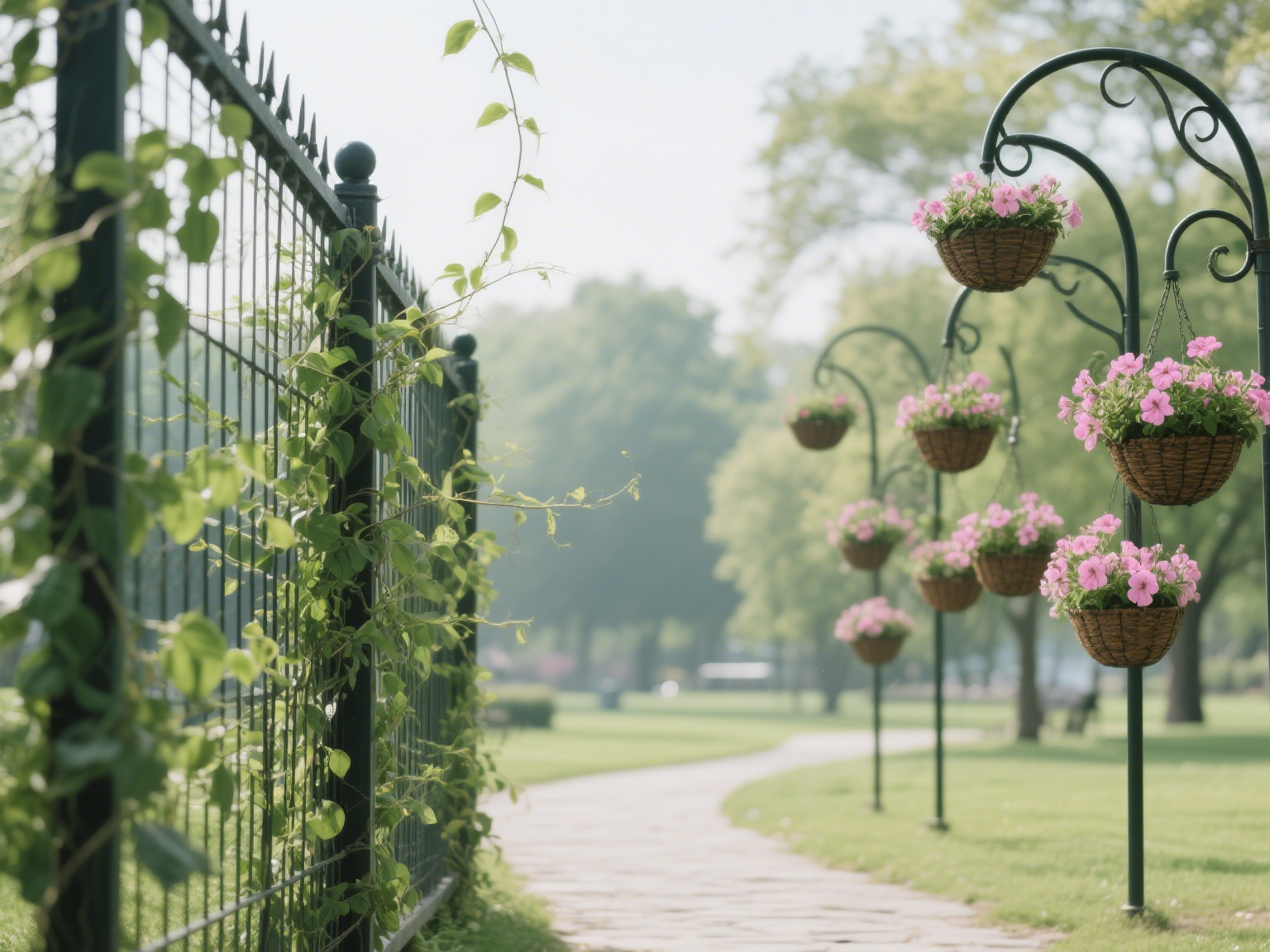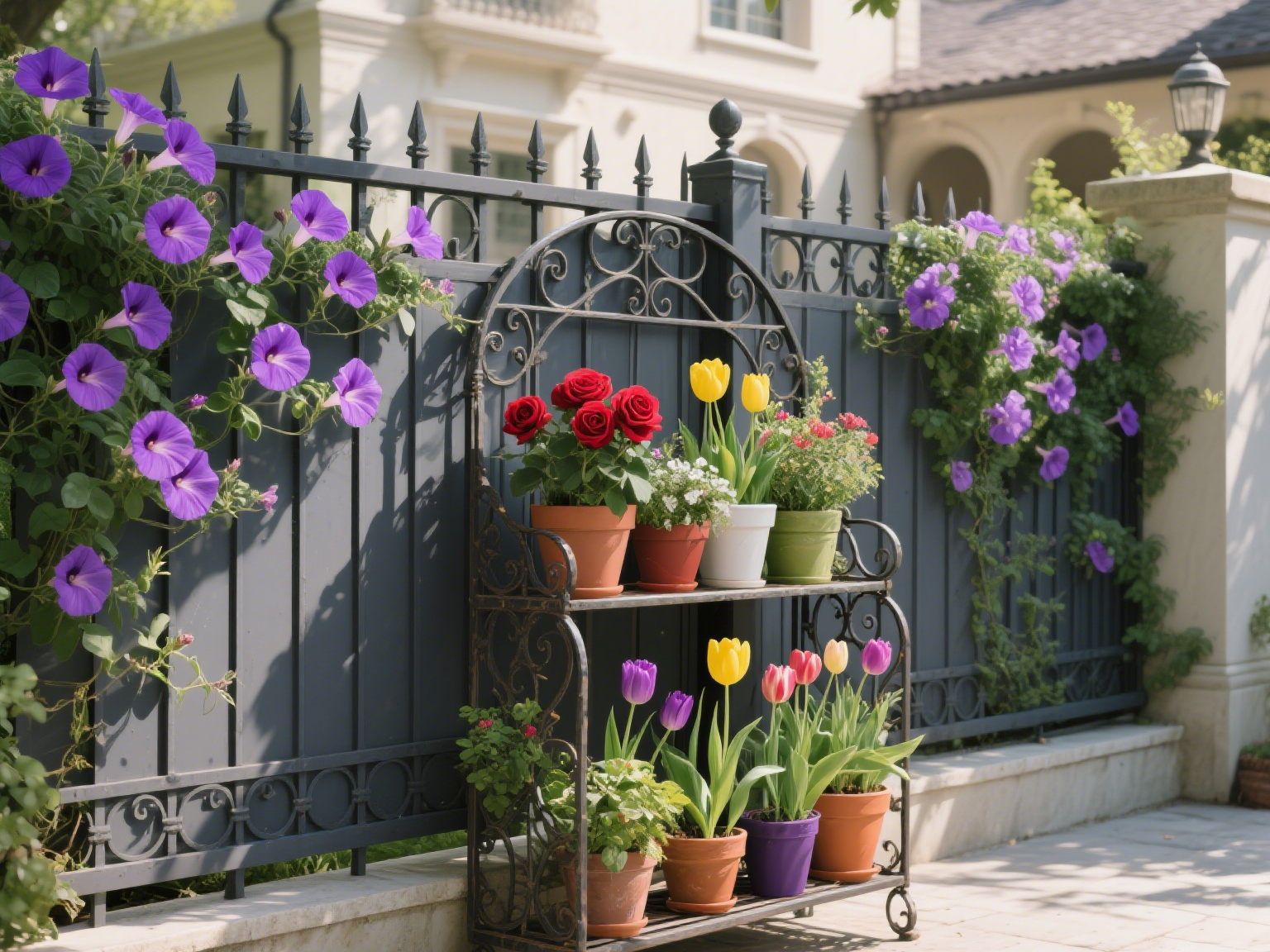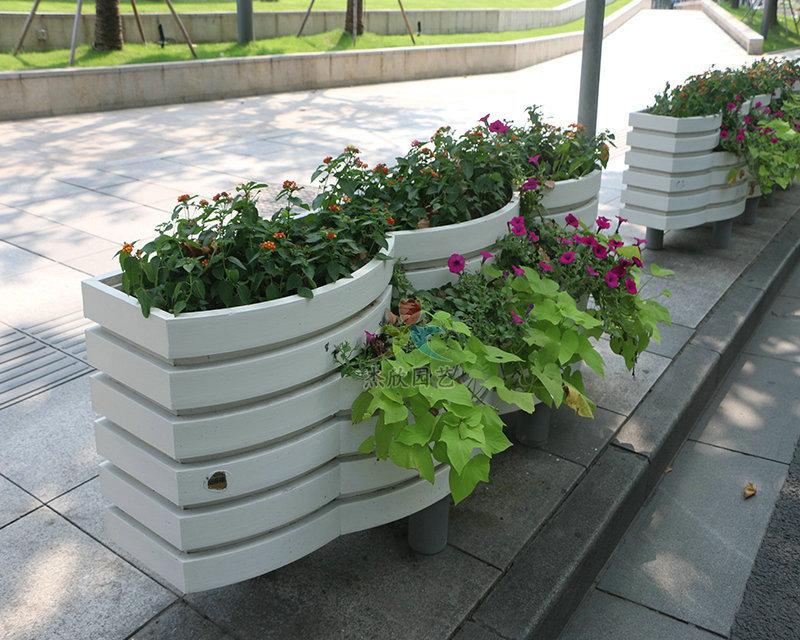In the Chenguang Community Garden in Xi’an, six sets of dark gray wrought iron flower racks once stood as the “apple of the eye” for the elderly. The renderings on the community bulletin board depicted hollow-carved racks entwined with morning glories, with seniors sitting on benches and smiling at the blossoms—a serene scene that won over all voting residents. However, since these racks were installed in the summer of 2021, they have become a Pandora’s box, gradually exposing the vast chasm between industrial design and real-life usability.
1. Scorching Heat: A Hazard for Burns
In July, Xi’an bakes under the sun, with surface temperatures exceeding 40°C. At 7 a.m., 68-year-old Grandma Wang was watering roses on the rack when her fingertips suddenly burned upon touching a horizontal bar. A thermometer revealed the rack’s surface temperature reached 65°C—almost as hot as a freshly boiled coffee cup. Within three days, the community hospital treated three elderly residents for second-degree burns from the racks; the blisters on their hands became stark indictments of the design.
“I never thought iron could get so hot—it’s worse than a countryside stove,” Grandma Wang sighed, examining her bandaged hand. The heat also created a crisis for potted plants: the thermal conductivity of the iron turned flowerpots into “ovens.” Spider plants that once needed watering once a day wilted at noon, requiring three daily waterings. Chen, a 72-year-old gardening enthusiast, pointed to withered succulents and joked bitterly, “This isn’t gardening—it’s rescuing plants from a furnace.”
Physics explains the harsh reality: iron has a thermal conductivity of 58.2 W/(m·K), 145 times that of wood. Under Xi’an’s 245 annual sunny days, the racks act as giant heat absorbers, posing burn risks and subjecting plant roots to constant high temperatures. A simulation by a university’s architectural environment lab found that soil near wrought iron racks was 8–10°C hotter than near PVC racks, increasing plant transpiration rates by 30%.

2. Cleaning Nightmare: Ornamentation Becomes a Dirt Trap
The Chenguang Community racks feature retro hollow-carved designs with 127 diamond-shaped cutouts per square meter. Initially praised as “more delicate than paper cutouts,” they became clogged with sycamore leaves and bird droppings after the first autumn rain. Aunt Li, 65, tried cleaning with chopsticks but found damp leaves stuck deep in the gaps, forming stubborn “dirt blockages.”
“Every Friday, I spend half an hour hunched over picking at this—more tiring than unclogging a drain,” frowned maintenance worker Zhang, displaying his tools: wire, toothpicks, and a mini vacuum. Despite efforts, green moss grew at the rack bases, attracting mosquitoes. A villa community in Chongqing knows this struggle well: they spend 12,000 yuan annually on 2,000 cubic meters of water to power-wash similar racks—equivalent to 10 households’ annual water use.
This dilemma stems from the clash between industrial aesthetics and practicality. Designers prioritized visual “airiness” but overlooked human physiology: the average adult fingertip is 1.8 cm wide, yet the narrowest gaps are only 0.5 cm, making physical cleaning nearly impossible. Ironically, the carved designs meant to “aid plant climbing” instead trap vine tendrils, creating untrimmed “plant blockages.”

3. Weighty Risks: A Danger to Safety
During a September community (parent-child event, 5-year-old Lele accidentally bumped into a rack’s support column. The 45-kg three-tiered rack lurched dangerously; a volunteer’s quick reaction prevented a disaster, but falling pots still injured the child’s ankle. This is not unique—similar accidents have occurred nationwide.
For elderly users, moving pots is a physical ordeal. Placing a 10-kg pot on the 80-cm-tall top tier requires standing on tiptoe, and the smooth iron bars offer no grip. Seniors have fallen and fractured bones from losing balance. The community now hires young volunteers weekly to help with pot changes, driving up labor costs annually.
Conclusion: A Mirror on Urban Design Flaws
The Chenguang Community racks reflect the shortcomings of urban fine-grained governance. They remind us that public infrastructure design must move beyond renderings and delve into users’ actual experiences. When elderly hands are burned, cleaners’ backs are strained, and children are injured, the so-called “industrial aesthetics” loses all warmth.
Perhaps it is time to redefine flower racks—not as designers’ artistic statements, but as bridges connecting people and nature, and people with one another. As Japanese architect Kengo Kuma said, “True good design makes materials disappear into the user’s experience.” When racks no longer feel cold, cumbersome, or heavy, but only radiate the vitality of greenery and the warmth of community, their true purpose will be fulfilled.

